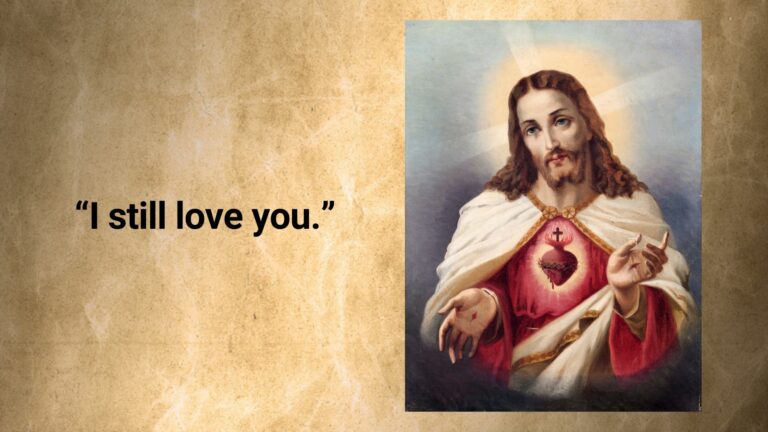
FILM REVIEW
“I still love you.”
For those who feel exhausted by the modern world there is a simple message: “You are loved. Come back.”
By Atilio Faoro
Sacred Heart is not an ordinary film. Some films entertain for an evening; others leave a lasting mark, stir consciences, and awaken faith. Sacred Heart falls firmly into the second category. Since its release, it has moved audiences across France—prompting tears, reflection, and above all, prayer.
What began as a modest project has become a spiritual and cultural phenomenon that no one, not even its creators, could have predicted.
A Simple Film That Took a Nation by Surprise
Steven and Sabrina Gunnell set out with little more than their faith and a desire to show God’s love in a direct and accessible way. There were no famous actors and no large production budget—only a sincere wish to bring the Heart of Jesus to modern audiences. Yet major newspapers and Catholic media alike quickly recognised that something extraordinary was happening.
Viewers who entered the cinema without expectations often left profoundly affected. In a France where religious expression is increasingly absent from public life, Sacred Heart quietly brought Christ back to the centre of attention, on the screen and in people’s hearts.
A Controversial Ban That Transformed Everything
The turning point came when RATP and SNCF banned the film’s posters from the Paris metro and train stations, claiming that the word “Heart” and the image of Christ might offend the public.
The result was the opposite of what the censors intended. Outrage spread across social media and Christian outlets, which condemned the decision as unjust and discriminatory. The public responded by flocking to see the very film they were not supposed to see.
What began as a small release suddenly became a national discussion. Many discovered the film precisely because it had been forbidden. It was as if the stones themselves had begun to cry out, and the screens carried a message that could no longer be silenced.
A Message of Love That Heals
The strength of Sacred Heart lies not in spectacle but in presence. The film communicates the tender and wounded love of Christ—a Heart pierced yet still loving without limit.
Its central character, a man broken by life, represents the wounded state of contemporary society. His encounter with the Sacred Heart is portrayed not as a fantasy but as a parable of hope: no one is too far gone to be healed.
Critics noted that the film “speaks to the intelligence of the heart”. It touches parents, young people searching for meaning, doubters, and those who feel exhausted by the modern world. Its message is simple: “You are loved. Come back.”
A Growing Popular Success
Despite limited distribution, the film’s impact has been remarkable. Parishes have booked entire cinemas; Catholic schools have organised screenings; and countless viewers have shared their testimonies.
People cry during the film, speak of conversion, rediscover faith, or experience reconciliation with family members. Some have even returned to confession after many years.
During its first week, the film surpassed 50,000 admissions—an extraordinary achievement given the small number of screenings. More importantly, the numbers continued growing week after week, driven not by advertising but by heartfelt recommendations from those who had seen it.
This persistence shows a truth that modern society often forgets: the thirst for God has not disappeared. It was simply waiting to be awakened.
A Call to Return to Christ
The film also speaks to a deeper crisis in the West—not simply economic or social, but a crisis of love and meaning. Many families are wounded, young people feel lost, and society often seems adrift.
Sacred Heart reminds viewers that without Christ, nothing truly holds together. This is not presented as ideology, but as lived reality and historical experience. The message echoes the long Christian heritage of France: when she was close to the Heart of Jesus, she flourished; when she turned away, she struggled.
The film invites families to enthrone the Sacred Heart in their homes and to allow Christ to reign once more in daily life.
A Fire Rekindled
Perhaps the most astonishing aspect of the film’s reception is the diversity of those it has touched. Thousands have shared their experiences, including non-Christians. One testimony from a Muslim woman named Malika, who wanted to support the film and expressed love for Christ despite not yet knowing Him, deeply moved audiences. Such moments reveal the universal power of the Sacred Heart: it speaks across cultures, beliefs, and backgrounds.
In dark cinemas, something remarkable has been happening. Tears have become prayers, and silence has become encounter.
Through this humble film, Christ seems to speak again to the people of France.
A Grace for France
Sacred Heart is more than a film. It is a sign of hope—an unexpected fire lit in the heart of a secular nation. Those who attempted to suppress its message unintentionally amplified it. Instead of disappearing quietly, it has awakened enthusiasm, devotion, and curiosity.
Christ, through this simple cinematic work, seems to say to France: “I still love you.” And nothing—not censorship, indifference, or secularism—can extinguish the fire of a Heart that loves without end.

